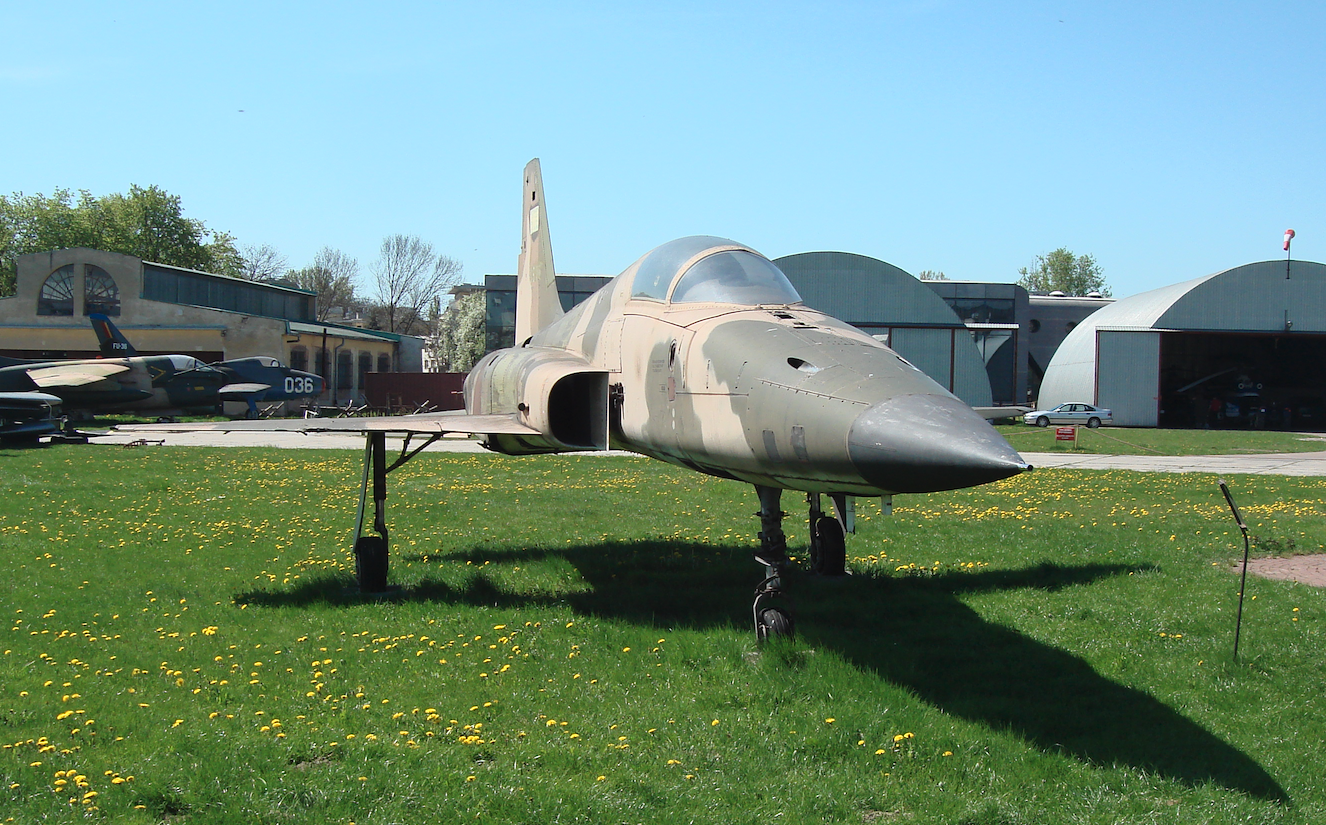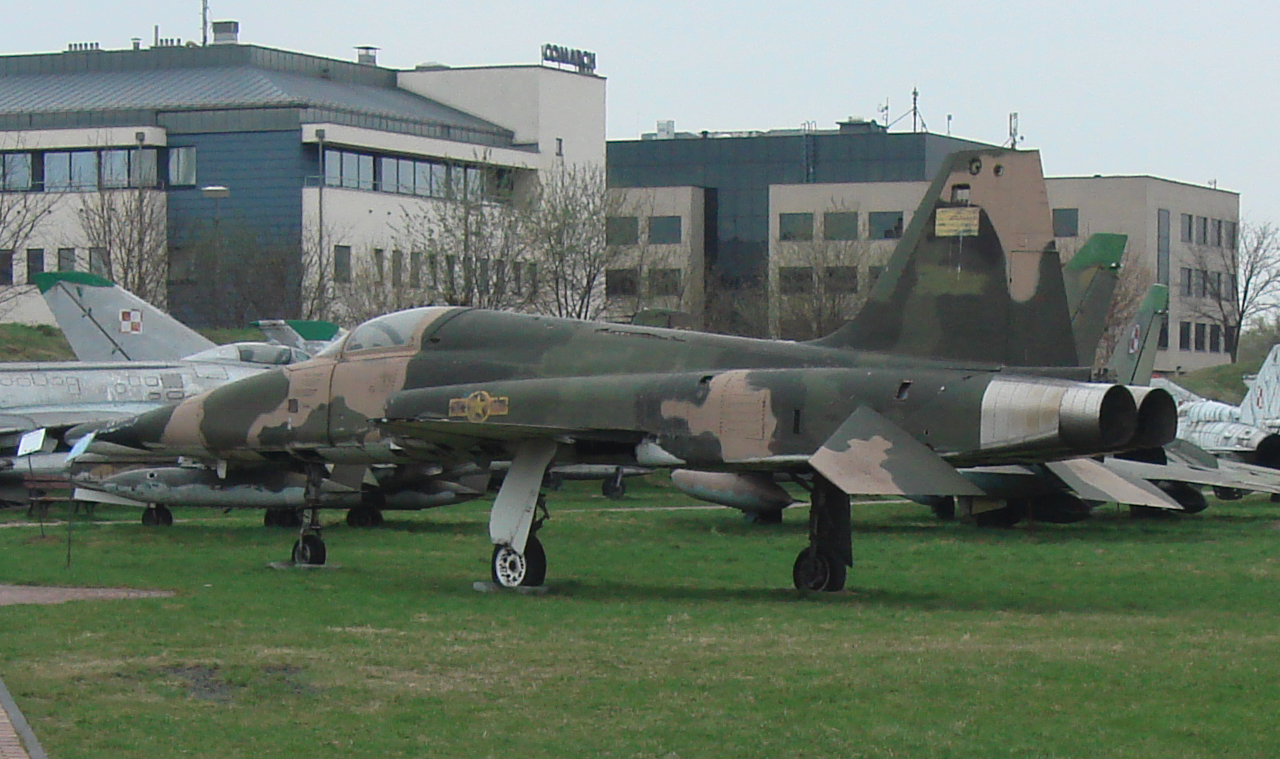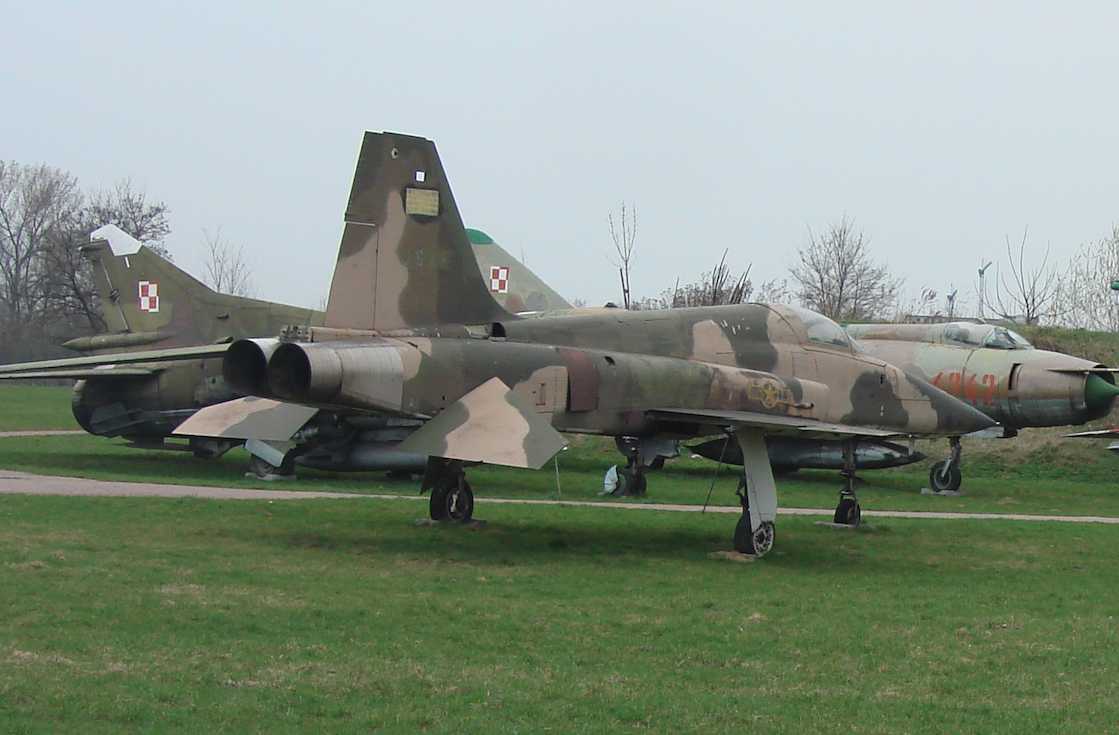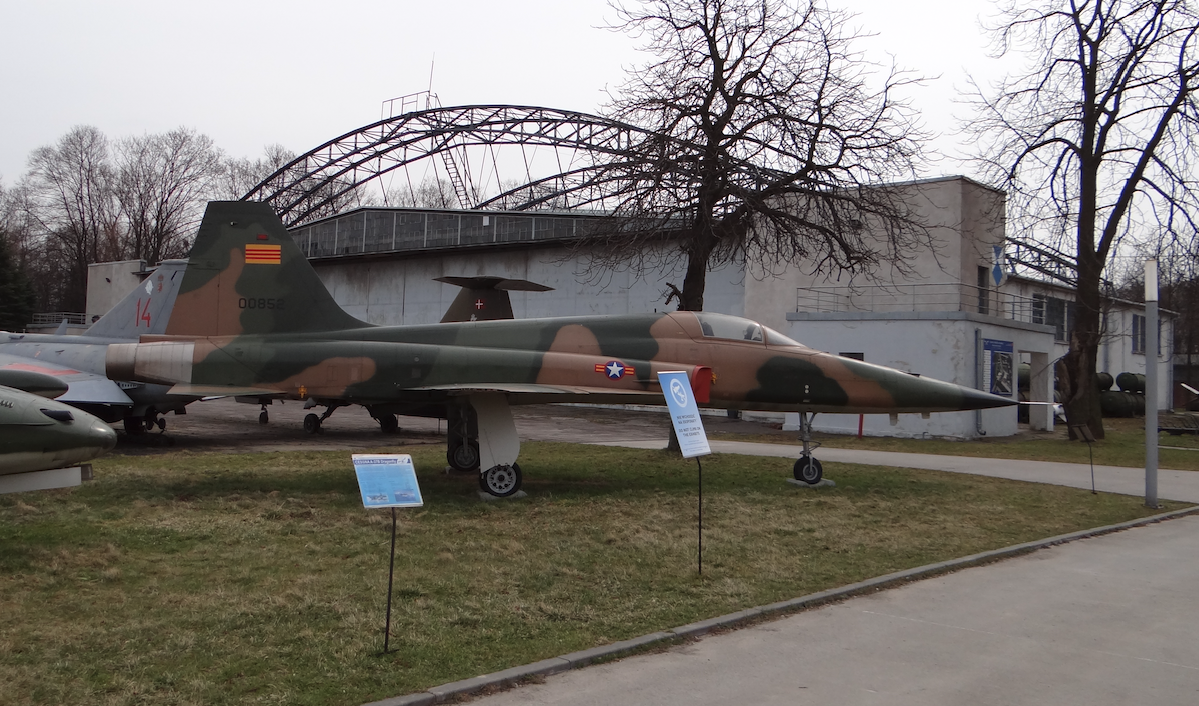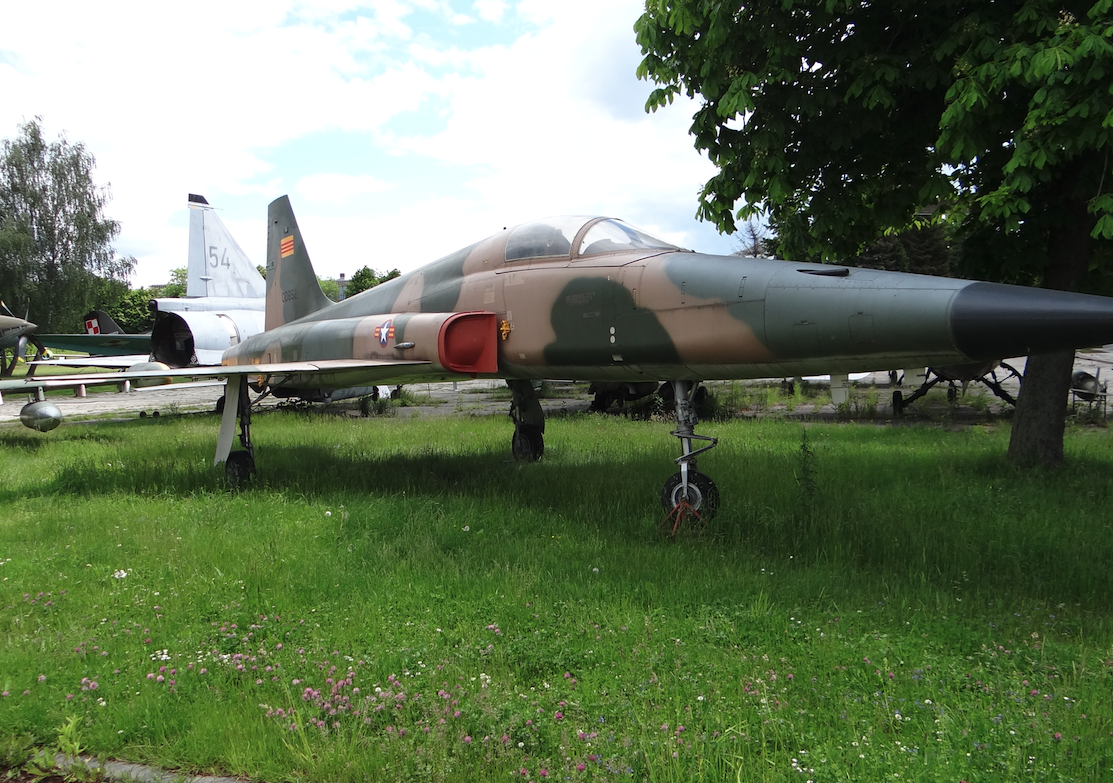History
The Northrop F-5 is a supersonic light fighter derived from the T-38 Talon training aircraft. Northrop F-5 also has various proper names: Freedom Fighter, Tiger, Tiger II.
Northrop F-5 C.
The Vietnam War began. The Americans decided to use F-5 fighters in those conditions. Exactly for the needs of those climatic and weather conditions, the F-5 C version was developed. The entire operation of the modernization and combat use of the F-5 was codenamed Skoshi Tiger (Tiger).
12 F-5 Cs were delivered to Vietnam from Williams (USA) by air, with two landings in Hawaii and the Philippines. Nevertheless, the KC-135 tankers had to be refueled 16 times. The distance was 14,000 km. The planes landed at the Bien Hoa Base on October 23, 1965, only to be in combat after only 5 hours. The planes spent 6 months in Vietnam, with a short break in the USA, in order to improve equipment.
In total, Northrop F-5 C planes in Vietnam performed 2,000 sorties in 4,000 hours. Only two planes were lost. One fire of air defense on December 16, 1965. The second, badly damaged, returned to base on one engine. In addition to combat values, the plane showed the highest operational readiness and the lowest maintenance effort up to hours spent in the air. However, the ratings of the aircraft are not clear. The short range is widely criticized, and the operational radius in combat conditions was only 240 km. (!). This forced flights with additional fuel tanks on the wingtips. At that time, the machine only took 2 x 267 kg or 2 x 340 kg bombs. In addition, the run-up required a runway of at least 2,000 m, which limited the possibilities. After analysis, the planes were handed over to South Vietnam -VNAF.
Airplanes for South Vietnam. F-5 A, B, E Tiger.
On April 17, 1967, 17 F-5 C machines and 2 F-5 B two-seater machines were handed over to pilots and mechanics trained in the USA. The number of flights they performed grew rapidly. From 388 flights in June 1967 to 527 flights in December 1967. The squadron became elite. Despite the low payload, the targets were destroyed with the help of high-explosive and napalm bombs. The communist offensive in 1968 was successfully repulsed.
In 1968, the new US president, Richard Nixon, made the decision to withdraw Americans from Indochina. But South Vietnam (capitalist) needed to be strengthened. The only fighter that VNAF pilots could quickly master was the F-5. The program was implemented in 1972. F-5 A fighters were then delivered for the armament of 7 squadrons. As the Americans did not have that many machines, planes were rented from Taiwan, Korea and Iran. Taiwan alone delivered 48 machines. Over time, the planes were to be returned and their place was to be replaced by new F-5 E. In total, Saigon received 118 F-5 A and F-5 B aircraft, including 8 RF-5 A aircraft.
In Saigon, all F-5s were called Tiger, which has become entrenched since Operation Skoshi Tiger. This name is inconsistent with the accepted name of Freedom Fighter under which the aircraft was exported. Interestingly, for the F-5 E version, the common name of the Tiger II became popular.
With time, F-5 E machines, straight from the Northrop company, began to arrive in Saigon. They replenished the losses and also replaced the planes returned to their owners.
In the years 1973-1975, the situation of South Vietnam systematically worsened. F-5 fighters performed more and more difficult tasks. These operations were intended to break the Ho Chi Minh trail and defend the outposts. At the same time, the help of the Americans decreased. The combat capacity of the squadrons decreased, and the air defense of the communists became more effective. Anti-aircraft rocket launchers and Striela manual rockets were introduced. Anti-aircraft missiles were particularly hard hit by the RF-5 A aircraft. They were not equipped with WRe. Their recognition possibilities have become illusory. Four planes were lost over the Ho Chi Minh Trail.
At the beginning of 1975, the communist troops launched a decisive offensive. On March 30, 1975, the city of Da Nang was captured and the attack on Saigon began. The South Vietnamese army was in disarray.
One of the effects of these events was the desertion of the F-5 E pilot. On April 8, 1975, the pilot Nguyen Thanh Trung launched an attack on the advancing enemy from the Bien Hoa airport. Already in the air, the pilot reported engine trouble and return to base. However, instead of returning there twice from a height of 300 m, he attacked the president’s palace in Saigon. Each time dropping 2 x 134 kg (2 x 250 lb) bombs. Then, the cannons fired at a fuel depot belonging to the Shell company and landed at the communist airfield. He was greeted with enthusiasm. Already on April 28, 1975, he took part in the attack on the airport near Saigon, in a captured Cessna A-37 B plane.
On April 15, 1975, communist forces destroyed 20 F-5 and A-37 aircraft at Bien Hoa airport.
On May 30, 1975, Saigon fell. Before this happened, 26 F-5s, including 22 F-5 Es, flew to Thailand. There, the Americans secured them at the U-Tapao base. The borrowed planes were returned to the owners. On the other hand, the F-5 E planes and those that were not sent to Vietnam were transferred to US training units. They played the role of Soviet planes in mock fights until the 90s.
The communists captured 27 F-5 E fighters and 60 F-5 A, B, C fighters. In Moscow it was decided to use this. One of the captured, airworthy F-5 A, along with documentation, spare parts and two engines, was decided to be sent by rail to Moscow. Since the wings could not be dismantled, they were … cut off. By the way, all the wires were cut. After reaching Moscow, the provisionally repaired plane was shown at an exhibition of captured equipment. After which the plane was renovated and tested on July 16, 1976. Colonel Aleksandr Sawicz was at the controls.
Comparative tests were also carried out with the MiG-21 M fighter, the best fighter in the CCCP at that time. The F-5 A aircraft came out victorious thanks to its excellent maneuverability. The results made a great impression on the designers at OKB Mikojana. The construction was rated very highly. For example: the generator (power generator) was twice as small as the Soviet one, and the batteries were more efficient and smaller. Instrument clusters similar but smaller, some with linear gauges. The aquamarine color of the interior surprised the engineers. A similar color later appeared in the MiG-23 cabin. The F-5 A plane turned out to be easy to use.
The Vietnamese communists asked the Russians to replace American equipment with Russian so that the planes could continue to be used. The task was not carried out because the Russian avionics and other devices were larger and did not fit into the American airframe.
In 1979, communist Vietnam’s F-5 planes took part in the offensive against Cambodia. Vietnam operated fighters until the end of the 1980s, on the basis of equipment cannibalization.
Northrop F-5 E to Poland.
Problems with maintaining F-5 fighters in service by the Communist Vietnam resulted in seeking help in Poland. In 1977, an official request was made to develop an operating manual and replace the components with those manufactured in the Eastern Bloc countries. Among other things, the assembly of the NS-23 / NR-23 cannons. In autumn, an F-5 E with the serial number 73-00852 arrived by sea to Poland, and then by rail to the Air Force Institute of Technology in Warsaw.
The plane arrived in airworthy condition, but was not carried out. It ended up starting the engines and taxiing. However, the disassembly began. The research results made it possible for Polish engineers to acquire knowledge, but the basic goal was not achieved. The explanation was for the lack of appropriate raw materials and materials. Their import from the "second payment area" was excluded. The Vietnamese returned home. As you can see, the "brotherly help" did not happen.
The plane went to the Institute of Aviation at Okęcie. Here, it was used to observe solutions that were used in the Orlik, Iryda and the K-15 engine.
It’s a shame to write about it, but the plane that went to Poland was treated brutally. It was badly stored. During disassembly and reassembly, he lost many pieces of equipment by "souvenir hunters". It is not to the degree of culture that should prevail in the Polish Aviation. Eventually, in the 1990s, it found its way to the Museum in Krakow.
In 2015, the F-5 E aircraft No. 73-00852 underwent maintenance and received a new paint coating. The plane remained in the following colors: green, dark green, brown camouflage; that is, as it was delivered to Poland in 1977. There is a hallmark of the Armed Forces of the Republic of Vietnam (VNAF) on the fuselage. The vertical tail shows the flag of South Vietnam – Yellow rectangle with three horizontal red lines. South Vietnam existed in 1955-1975. In 1975, it was occupied by Communist North Vietnam. The plane was put back in the open-air exhibition, this time closer to the main hangar.
Northrop F-5 E to Czechoslovakia.
As hopes in Poland shook, the Vietnamese asked Czechoslovakia for help. In 1981, they were handed over the Northrop F-5 aircraft number 73-00878, which was packed in two containers of L-39 aircraft previously delivered to Vietnam. The Czechs did not help either. The plane found its way to a museum in Prague.
Written by Karol Placha Hetman

